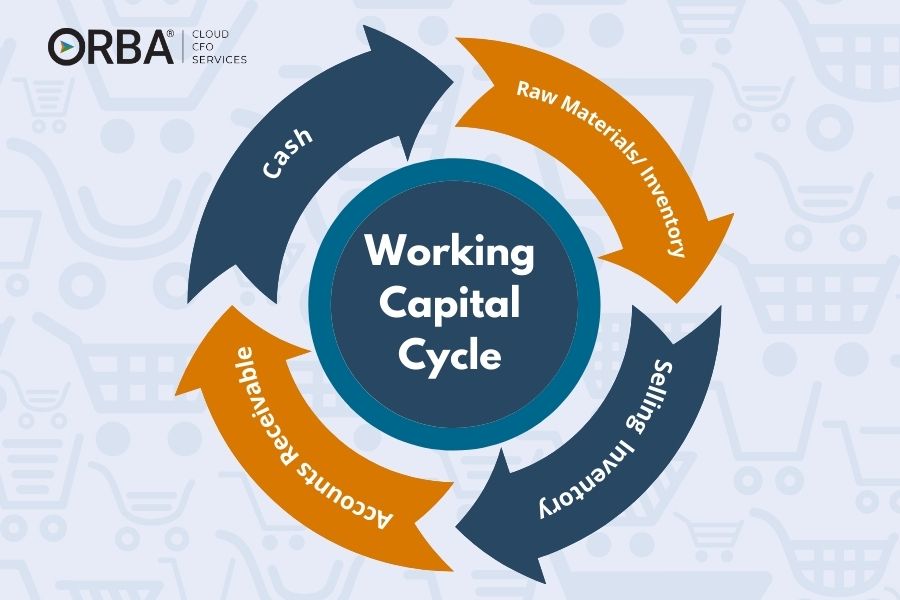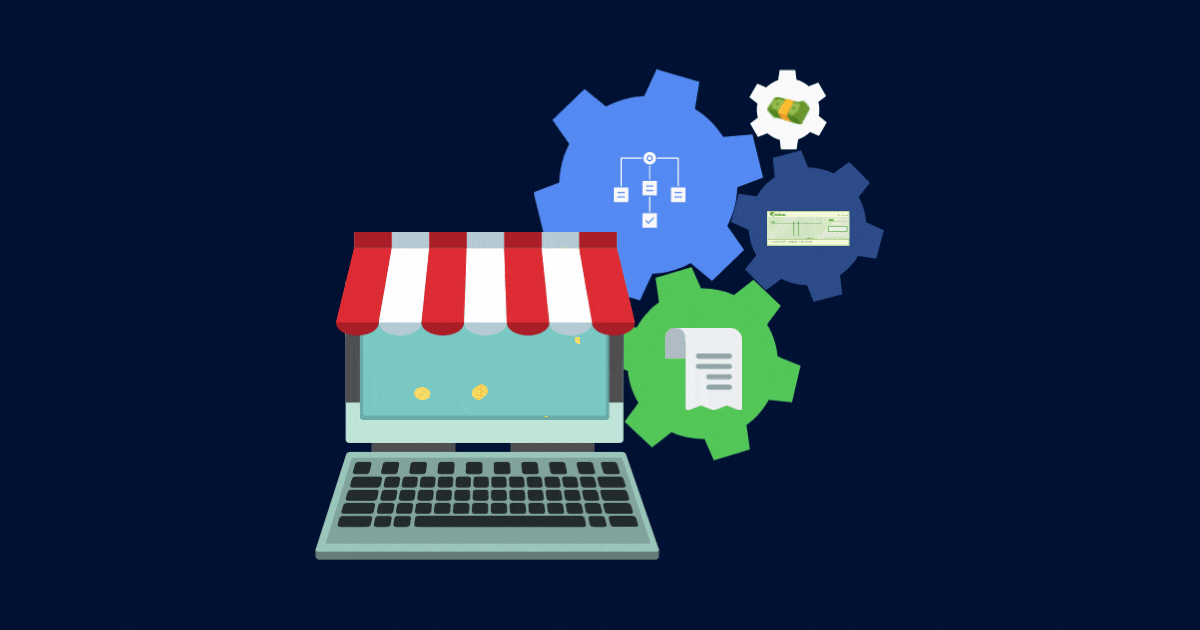
Managing cash flow is one of the most critical challenges facing small businesses today.
- Intuit's study, The State of Small Business Cash Flow, reported that "61% of small businesses around the world struggle with cash flow. Because of cash flow issues, nearly one-third of those surveyed cannot pay vendors, loans, themselves or their employees."
- Data from Guidant Financial shows that the No. 1 challenge for 32% of small business owners is lack of capital/cash flow.
Cash flow is the inflow and outflow of money from a business. Poor cash flow reduces liquidity, preventing a company from paying suppliers, replaying loans, covering the costs of daily operations, and more.
For small businesses, cash flow challenges can seem overwhelming. But help is here! The following quick-study guide provides proven, field-tested solutions to fixing your toughest cash flow problems.
Sign up for a Free Trial today
Key Takeaways
- What are the most common small business cash flow problems
- 10 proven solutions to fixing small business cash flow problems
- How cash flow problems can lead to business failures
- 6 must-know cash flow strategies for small business
- Cash flow tips for ecommerce, construction, SaaS, and manufacturing businesses
SHORTCUTS
-
6 Critical cash flow tactics and strategies for small business
-
Tips to avoid cash flow problems for a construction business
-
Tips to avoid cash flow problems for a software as a service (SaaS) business
-
Tips to avoid cash flow problems for a manufacturing business
Typical cash flow problems for small business
The types of cash flow challenges that small businesses face typically fall under:
- Poor Planning
- Underestimating startup costs
- Overestimating future sales
- Expecting profitability too quickly
- Failing to create a cash flow budget and to forecast future cash flow
- Ignoring seasonal changes in demand
- Failing to manage business growth
- No plan for collections
- Bad pricing models
- Lacking cash reserves
- Difficulties in obtaining financing
- Poor Day-to-Day Management
How to fix top cash flow problems for small business
Start by creating a cash flow budget to assess your cash flow situation accurately
A cash flow budget is an estimate of how much money you expect to see flowing in and out of your business during a specific time. A cash flow budget will show you which months you can expect a cash deficit and which months you can expect a surplus. You’ll also gain insight into how much cash is required to sustain your business over the next year.
Aggressively reduce expenses:
-
- Discontinue non-essential services in the short term.
- Expand virtual services.
- Cancel or reduce premium services.
- Negotiate better deals with your suppliers or move to lower-cost suppliers.
- Reduce operating costs.
Speed up accounts receivable:
-
- Send invoices earlier.
- Review your billing cycle and payment terms.
- Break up payments into project-based weekly or bi-weekly installments.
- Ask for a deposit or partial payment upfront.
- Encourage or incentivize early payments.
- Accept multiple payment methods.
- Actively follow up on past-due accounts
Prioritize sales activities
Focusing on profitable, close-to-closing sales activities can help solve many cash flow issues.
Optimize invoice management
Problems in invoice processing can lead to inconsistent cash flows.
Avoid invoice-related problems:
- Use invoice management software for error-free invoices.
- Send invoices as soon as customers place an order.
- Consider charging late payment fees to customers.
Examine your pricing model
Drop your least profitable products or services and focus on those that generate the most cash. To get the pricing right, you need to analyze your P&L and cash flow statements, pay attention to your competitors, and consider all factors that may affect your market.
Examine your business model, your sales cycle, and cash conversion
Is your business model failing, your B2B sales cycles too long, or is it taking too long to turn inventory into cash? If your cash flow problems are seasonal, use data from past years to plan how you’ll spend and save cash.
Have access to cash
There will be times when you find yourself in a tight cash flow spot. You’ll need a backup plan: a cash reserve or access to a loan or line of credit.
Investigate customer churn and product portfolio if you’re experiencing low sales and high customer turnover
These are key factors contributing to poor cash flow.
Critical cash flow tactics and strategies for small business
Manage payables strategically
-
- Take advantage of creditor payment terms. If a payment is due in 30 days, don’t pay it in 15 days.
- Try to extend payables as long as possible.
- You should also prioritize and stagger your bills — paying the important ones first.
- Carefully consider vendors’ offers of discounts for earlier payments.
- Don't just focus on the lowest price when choosing suppliers. Sometimes more flexible payment terms can improve your cash flow more than lower prices.
Accelerate receivables
- Offer discounts to customers who pay their bills quickly.
- Require credit checks on all new non-cash customers.
- Issue invoices promptly and follow up immediately if payments are slow in coming.
- Provide your clients with several ways to pay.
- Adjust your payment policies to require a deposit or partial payment upfront.
- Consider online invoices, as well as provide online payment options.
Be smart with inventory
- Your cash flow largely depends on how you manage your inventory: know the cost of carrying inventory.
- Poor inventory controls could cause you to hold more stock than needed, resulting in unnecessary storage costs.
- Offer discounted prices strategically to move outdated inventory.
Consider credit tools
- Use a business credit card to pay for everyday expenses to free up cash. It’s best to use credit cards for small purchases that you can pay off the next month.
- Take advantage of any rewards programs to reduce your costs.
- Consider setting up a line of credit. A line of credit provides quick access to funds when needed and can bridge gaps between payables and receivables.
Use technology
- Accept online payments to collect receivables faster and use electronic fund transfers to pay bills on the due date automatically.
- You should also use technology to manage your financial activities to increase efficiencies and lower costs.
Stay on top of your cash flow
- Learn your cash flow cycle — the time it takes to purchase raw materials, turn them into products, sell them, and collect payment.
- Generate cash flow statements monthly.
- Analyze your cash flow monthly.
- Figure out whether you need to increase cash flow.
How cash flow problems can lead to business failures
- Late or missed payments can strain supplier relationships and lead to loss of their services
- Late or missed debt repayments can lower your company’s credit rating, making getting credit more difficult
- Late fees add to your debt
- Low cash flow curtails your ability to fund efforts to grow and retain business
Tips to avoid cash flow problems for an ecommerce business
Poor money management is one of the top reasons ecommerce businesses have an 80%-90% failure rate. Ecommerce profit margins are typically small if you’re selling products, particularly in the online retail space. They’re larger for service businesses, but there’s still little room for mistakes.
- Forecast your cash flow
Ecommerce businesses are not just about selling. Every business involves taking care of taxes, wages, salaries, loan repayments, and other overhead expenses. You need to forecast your cash flow and plan each business expense accordingly. - Manage your inventory
Your inventory mustn't hold up significant capital. Check your inventory and sell the stock that you don't need. - Run promotions
Boost cash flow in the short term by running promotions and offering sales. For digital products, you can create early-bird offers or give discounts on new signups. - Increase your average order value
For physical products, you can set up a minimum order value for free shipping orders. For digital products, you can encourage your customers to upgrade to premium plans. - Use software to automate payments and organize multi-currency transactions
- Increase cash inflows
- Diversify your product portfolio to increase sales.
- Package complementary products to increase average order value and get more cash into the business.
- Offer a variety of payment options:
- Debit cards
- Credit cards
- Mobile payments
- Electronic bank transfers
- Encourage early payments by offering prepayment discounts.
Decrease cash outflow
-
Manage your business expenses by scheduling them against your incoming invoices. You want to shorten the time between making a business expense and getting paid.
-
Shorten your working capital cycle. Working capital cycle is the time it takes to convert net current assets and current liabilities into cash. To increase cash flow for ecommerce businesses, shorten your working capital cycle.

How to forecast cash flow for an ecommerce business in 4 steps
Step #1: Choose the time for the forecast
Step #2: Add up costs and expenses
Step #3: Realistically project sales number
Step #4: Account for payment cycles
Tips to avoid cash flow problems for a construction business
Construction projects require substantial cash flow. General contractors must purchase supplies, pay employees, vendors, and subcontractors, and cover the costs of unexpected changes during a project. This puts a tremendous strain on cash. In addition, payment terms of 120 days are common in the construction industry.
According to construction professionals surveyed in a recent Construction Cash Flow & Payment Report, cash flow problems reduced profits by 47%, delayed projects by 33%, and forced 30% of companies to take out loans. In addition, 97% of construction professionals experienced stress from slow payments and cash flow problems, and only 9% said that they always get paid on time.
Common construction cash flow issues
- No advance payment: If your project bid doesn't include any advance payment requirements, you must pay the total cost of getting the project started. Requiring an advance payment will provide you with cash flow to get the project started and float the company until you get paid.
- Paying bills early: Paying bills too early can reduce cash flow, placing an excessive financial burden on your business.
- Joint ventures: Construction projects often require multiple companies. Any partner that fails to fulfill their obligation can jeopardize the entire job and your payment.
- Poor (or no) credit policy: Without an established credit policy, you risk making poor credit decisions or losing business from reputable vendors or contractors.
- Lack of change order management: A change order usually increases the project’s cost. You risk getting underpaid without the proper documentation and billing for change orders.
- Failing to budget for retainage: Retainage is money withheld until the end of a project to ensure that the project is completed to the job specifications. Retainage is typically 5-10% of the total contract.
- Customers are slow to pay invoices.
- Contractor submitted invoices that don't cover the scope of the work: The contractor performed/paid for changes that the client still needs to approve and remain unbilled.
- There is an unexpected increase in operating liabilities, like payroll taxes, union dues, insurance fees, or other financial obligations.
9 Ways to improve cash flow in construction
- Before you begin any new project, conduct a cash flow forecast, a thorough analysis of how much cash the job requires.
- Only use cash to buy your supplies and materials if you receive a substantial discount; otherwise, secure financing options — credit cards, lines of credit, and loans — with your suppliers. While you'll be paying finance charges and making regular payments, you won't be out of pocket for the total amount, so more funds are available to run the business.
- Shop for the best deals to reduce costs and free up cash.
- Change orders that add costs should be processed immediately rather than waiting until the project is complete.
- Automate your payments process and send all invoices out immediately, followed by email reminders. Increase your cash flow potential by sending invoices ahead of time.
- Accept electronic payments to get paid faster, increasing cash flow for day-to-day operations, payables, and growth.
- To avoid overbilling or underbilling, bill according to what has been completed.
- Include payment terms in contracts, including terms related to change orders, retainage, liens, and any other details that could lead to delayed payments.
- Use technology to help automate workflows, streamline processes, and avoid costly mistakes in managing the project and cash flow.
Tips to avoid cash flow problems for a Software as a Service (SaaS) Business
Research on SaaS industry trends shows that for 89% of SaaS business owners, acquiring new customer subscriptions is the number one growth activity. Maintaining existing customer renewals is the top growth strategy for 59% of SaaS businesses, followed by upselling and add-on sales, which are the focus for 46% of companies.
8 tips to improve cash flow for your SaaS business
- Test various payment plans
- Freemium model
- Substantial discount for multi-year subscriptions - Send emails with special offers and upgrade deals to incentivize customers to pay a little more each month for a better service
- Actively reduce customer churn by deploying customer nurturing programs
- Invoice regularly
- Set up recurring payments
- Conducting weekly or monthly forecasts
- Schedule revenue to flow in before accounts payable amounts are due to flow out
- Build cash flow forecasts to understand whether you have sufficient capital to keep your business running and growing
- Track relevant working capital metrics
- Establish real-time spend control
Taking care of your existing customers is one of the most effective ways to establish a positive cash flow state.
Tips to avoid cash flow problems for a manufacturing business
Effective cash flow management and planning are essential for all businesses, but even more so for manufacturing companies that deal with multiple suppliers, purchase stock, manage inventory and juggle various sales contracts. Low-profit margins, maintaining too much inventory, and giving customers too much credit are all common causes of cash flow shortfalls in the manufacturing industry.
According to a Crowe Horwath LLP study, 82% of U.S. manufacturing and distribution companies believe optimizing working capital is "extremely important" or "very important" to their company's success. But only 46% say they had implemented a working capital plan.
Manufacturing cash flow challenges
Long business cycle
From raw material procurement to selling goods, getting cash out of those raw materials can take weeks to months. Even after selling your product, you may wait 1-3 months for payment.
High overhead costs
Manufacturers face energy bills, wages, and loan repayments, among other expenses.
Unexpected inventory costs
You may have acquired the machinery and inventory to meet new orders, but the orders have yet to materialize. Now you are sitting with most or all of your cash flow tied up in stock.
Supply chain volatility
Uncertain conditions and changing business patterns can create cash flow strains for your suppliers and customers, which can also affect your cash flow.
4 strategies manufacturing companies can deploy to improve cash flow
Optimize inventory
- Establish purchasing procedures and an approval process
- Identify slow-moving or fast-moving stock
- Use data to predict future demand accurately
- Control your inventory ordering process
- Accurately track the cost of goods
Build strong partnerships with your suppliers
- Communicate regularly with your suppliers to build rapport, explain your business, and establish proper expectations. When needed, try to get longer credit terms, price breaks, or lower minimum order quantities to help finance the cost of inventory rather than drawing upon cash reserves.
- If necessary, seek a third-party financier that can put you in a strong cash flow position so that you can negotiate favorable deals with suppliers, jump at new opportunities, or weather financial downturns.
Refine internal operations
- Ensure your system to track cash flow allows you to see where your cash is going and when. In particular, make sure you know the average time between the purchase of raw materials and payment receipt, as well as the time taken in each step of the process.
- Review expenses and remove or minimize costs that do not directly influence sales or production.
- Eliminate all activities that waste time or materials.
Proactively manage your clients
- Ask for an upfront deposit or milestone/progress payments from your clients.
- Offer discounts and other incentives to encourage clients to make payments as soon as possible.
- After sending your initial invoice, implement a program of recurring email reminders to help you get paid faster. You may have to renegotiate terms with slow-paying clients or start implementing late-payment penalties.
- Make it easy for clients to pay you by offering several payment methods.
How Plooto can help solve your cash flow problems
Plooto simplifies and automates cash flow management. Through a single integrated AP/AR platform, you can easily track and manage the entire cash flow cycle. Using Plooto Capture, AI-based optical character recognition, upload your bills for automated creation and view your pending payables, payments in progress, and completed payables/receivables. You get the information you need to reconcile after all the transactions have been recorded automatically. Plooto records this data in your accounting software automatically as well.
We tested pretty much all the solutions on the market to be honest, and the Plooto Capture feature is one of the most complete and effective OCR solutions available. Not only does it extract with a lot of accuracy, but it also connects directly with our payables which provides us a good overview of our business numbers.”
- Justin Forest of NJ Construction
You can then filter the raw data. For example, you can look at specific suppliers. For further analysis and reporting, you can easily export this data into an Excel/ csv file, which can then be imported into third-party data tools for study. Plooto provides the data you need to make more informed and better decisions.
Additionally, Plooto offers various payment collection options. Its pre-authorization debit agreement (PAD) automates payment collection while increasing cash flow forecasting visibility.
The risk of poor cash flow management crippling your business is genuine. But as this quick study guide points out, there are several proven strategies to help your business overcome this threat. Among them: be in control of your cash flow, manage your accounts payable and accounts receivable strategically, use technology to optimize your systems, and be smart with your inventory. Deploying these strategies will not only address the problem of poor cash management, but will help your business flourish in the long run.
Frequently Asked Questions
What are some early signs of cash flow problems?
Early signs of poor cash flow include decreased liquidity, slow collections, excessive short-term debt, slow or stagnant business growth coupled with discounting to improve sales, and overtrading.
What are the main causes of cash flow problems?
Common causes of cash flow problems include not paying attention to expenses, slow paying customers, inefficient cash management, and not using the cash flow statement.
How do you know if you have cash flow problems
There are a number of warning signs that may indicate cash flow problems: invoices are stacking up, expenses are increasing, sales are slowing, or sales are high but due to falling margins working capital is low.













